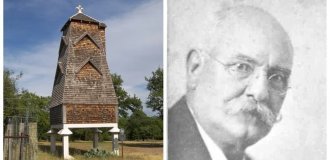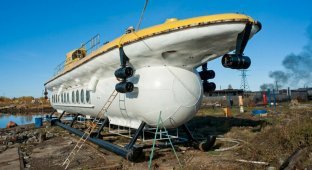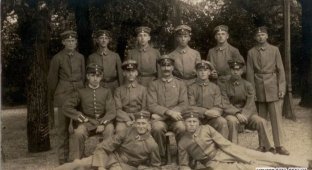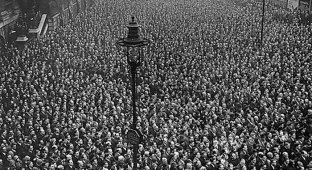“Lusitania”: versions of the reasons for the second “explosion” (4 photos)
Already at the beginning of the 20th century, the future confrontation on sea between England and Germany. So everything built on British shipyards began to design and equip ships so that in case of war they could be used in combat. 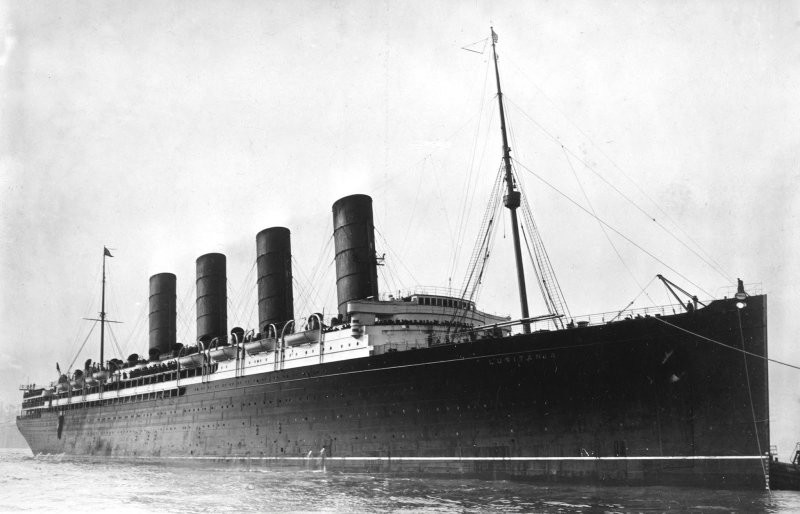
The liner Lusitania in the port of New York
The liners Lusitania and Mauretania were launched in 1906. They were equipped with the most powerful steam turbines at that time, the ships developed a fairly high speed for their time, had double bottom, watertight bulkheads, and could also carry twelve guns With the outbreak of the First World War, Germany expressed concerns about the flights of these airliners. "Lusitania" and "Mauritania" was suspected of delivering illegal military cargo from neutral US to Great Britain, which made them legal prey for German submarines.
On May 7, 1915, the submarine U-20 off the coast of Ireland attacked the Lusitania, two powerful explosions were heard. Soon the ship left to the bottom, taking with it more than a thousand people. There were immediately many theories and versions related to the disaster. The second one was especially intriguing. “explosion”, or rather the reasons why it could happen.
The version of the “second torpedo” appeared thanks to observations some passengers who allegedly saw two or even three torpedoes, released from a submarine. For propaganda purposes, this version was seized upon both Great Britain and its allies. Version inconsistencies were kept silent, so it is not surprising that in the final report of the commission on The investigation into the crash referred to a second torpedo as the cause of the second “explosion.”
However, there was most likely only one torpedo. First of all, in The favor of this theory is evidenced by the stock of torpedoes on the U-20. Of the 7 available 4 torpedoes were used before the attack on the Lusitania, and another 1 or 2 Captain Schwieger, according to the instructions, was supposed to leave the torpedoes on transition to Germany. In addition, in the U-20 logbook, Schwieger indicated that against the Lusitania he used only one torpedo from the bow apparatus, while the remaining two were in the stern. Hardly a submarine would have time to turn around so quickly that two explosions from hits happened almost simultaneously.
On the other hand, the possibility of launching a second torpedo cannot be completely ruled out. The typewritten version of the submarine's journal is replete with errors and contains attack records are atypical postscripts. Since Germany sought to disown the sinking of a passenger ship, Schwieger could have been ordered falsify your own records. 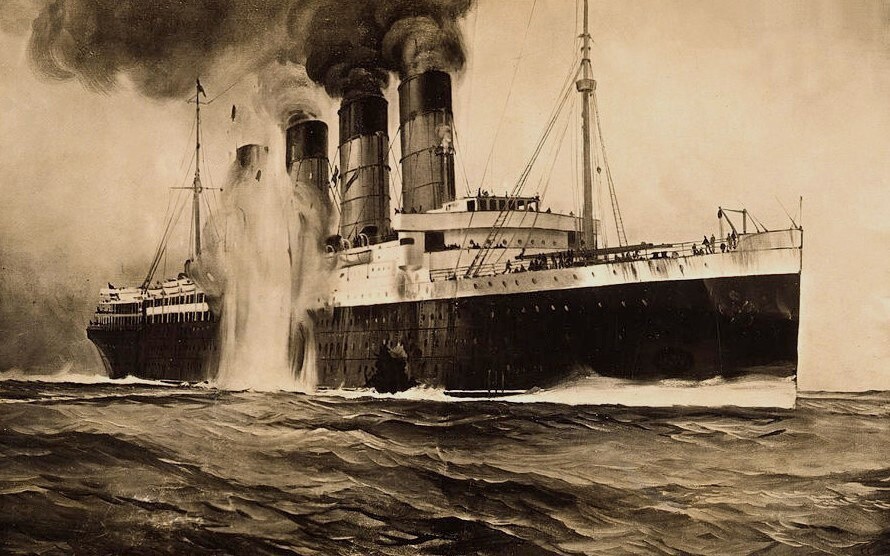
A torpedo hits the Lusitania.
The German press explained the second “explosion” on the liner presence of military cargo. There was one on board: brass, copper wire, various mechanisms (all this was intended for the production weapons in the UK), 4,200 boxes of rifle ammunition and more 1000 boxes with unloaded parts of shells, as well as 46 tons aluminum powder. However, such a load could hardly be the real cause of the explosion, and a number of factors speak in favor of this - from the quantity in percentage of the ship's tonnage to a questionable explosion hazard. Boxes with cartridges and powder were checked by American soldiers even before the war. officials regarding the safety of their transportation by passenger ships, and they passed the test successfully.
After World War II, simulations were conducted to checking the possibility of an explosion of the military cargo of the Lusitania, but they showed that the cargo is still safe. Only in the 1980s, researcher R. Ballard, having lifted boxes with intact cartridges from the bottom of the liner, finally completely proved the inconsistency of this theory.
In the 1970s, a theory appeared in the British press about “secret cargo”, which allegedly caused the second “explosion”. TO such cargo included gunpowder or other explosives that the British “disguised” them as officially transported “Lusitania” large quantities of cheese and fur. The author of the theory, historian Simpson, tried prove your ideas using Cunard Line financial papers. But he doesn't could explain why Great Britain had to resort to such tricks, especially in light of the British conspiracy theory he puts forward The Admiralty, who allegedly deliberately exposed the liner to torpedoes. More Moreover, Simpson's theory is refuted by the fact that the second "explosion" was heard some time after the first, which could not have happened during detonation gunpowder Expeditions to the wreck of the Lusitania definitively disproved the possibility of explosive detonation, since otherwise the damage to the hull would have been very significant.
There is a theory about a coal dust explosion. But she's extremely doubtful - raThe destruction of a coal bunker does not yet prove detonation. The starboard bunkers were flooded instantly, which means coal dust it couldn't be. And if the dust on the left side caught fire, then so the surviving passengers would definitely have seen the huge fire and would not have passed it by describe.
The most possible and logical explanation for the second “explosion” There is a version about the explosion of boilers or steam pipelines. In favor of this version says Schwieger's entry about a large cloud around the liner, this is the same cloud They also watched from the shore. This theory is also confirmed by memories stokers, whose detailed descriptions of what happened give a characteristic picture boiler explosion. In addition to boiler explosions, destruction may have occurred any steam pipeline due to hit by a torpedo or water, shaking, steam from explosion. But even if they had survived, a situation could have arisen that destruction would become inevitable. 
The wreck of the Lusitania is badly damaged
To summarize, we can say that theories about the causes of the second There are a lot of “explosions”, some are doubtful or refuted, others are unproven. But it’s unlikely to prove anything: the liner lies on the bottom on the damaged side, the hull over the years almost completely collapsed. One can only guess what exactly happened on May 7, 1915.




